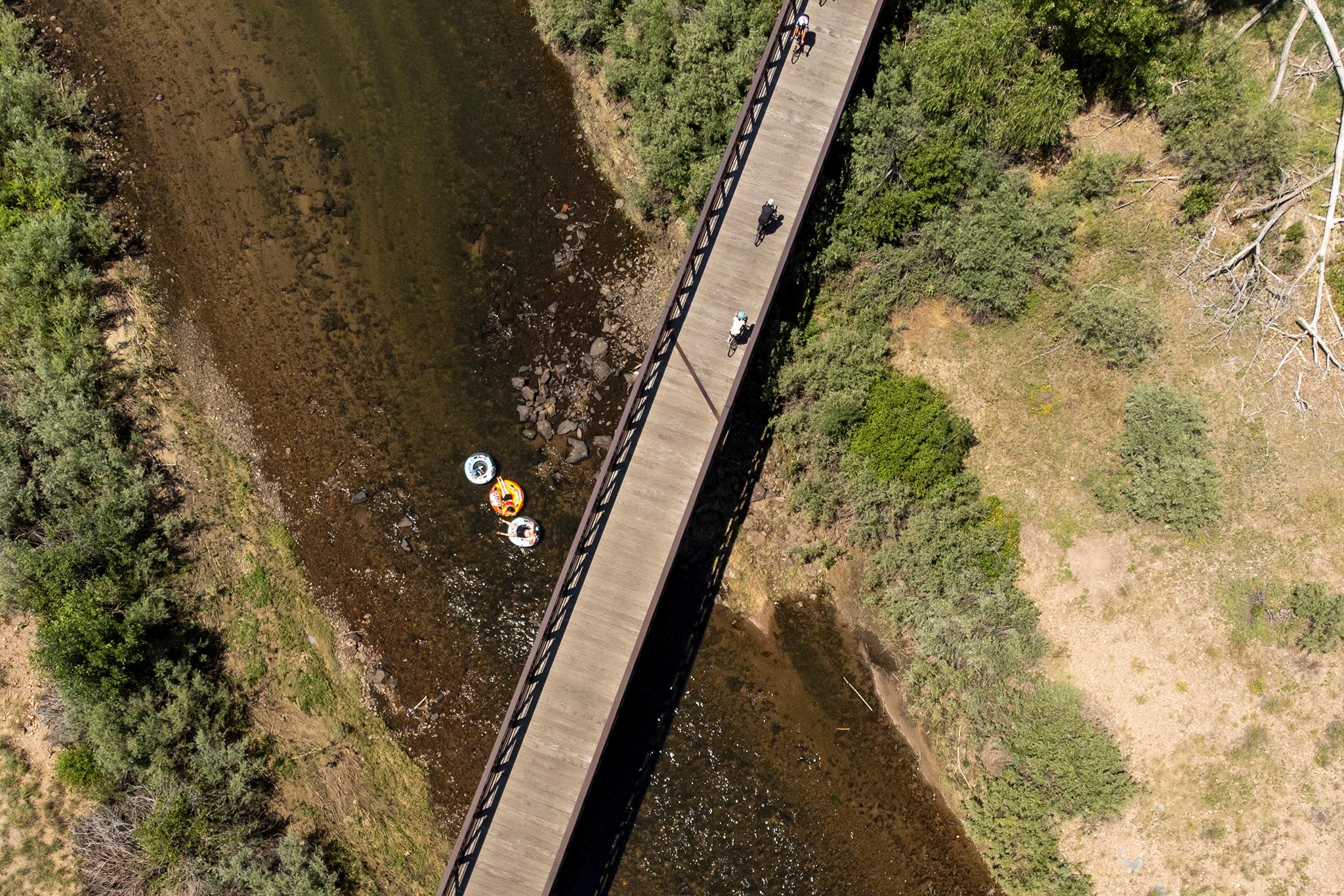Denver's rainy spring made way for a truly sickening few weeks of tubing (in a good way) on the South Platte.
But the era of reliable flows is over.
Between the middle of May and the end of June, the river was too high for most people to enter safely, said Skot Latona, South Platte Park manager.
Latona, recently named a "real-life Leslie Knope," said they had to post signs saying only strong-swimming adults should risk getting in.
But for two weeks, between June 26 and July 11, things were just right. The state's stream gauge at South Platte Park, right below the Chatfield Reservoir, recorded flows in tubing's Goldilocks range, between 50 and 600 cubic feet per second (CFS). People noticed, Latona told us. His staff fielded long lines of cars waiting to get into one of the park's 75 parking spaces, a bigger queue than he'd ever seen.
Unfortunately for local tube lovers, flows have been below 50 CFS ever since. Latona said the era of consistently good conditions is over.
"You're mostly sitting in treated wastewater at this point," he told us.

There still is some hope for dedicated floaters.
The South Platte's flows are only kind of related to rainfall and snowpack. In a very wet year like this, there was enough excess water that state resource managers had to just send some downstream.
But in normal times, flows are usually dictated by need downstream. Basically: If a farmer further down the river needs water, she can call the state and ask for a release from Chatfield, then draw out what she's allowed based on her individual rights, as long as there's enough water in the system.
"There's a lot of water upstream," Latona told us, which means there could be some good tubing weekends ahead if anyone does ask for water further downriver.
He said tubers should check the South Platte Park stream gauge online about an hour before they head out to make sure flows are above 50 cubic feet per second. Water released on a Friday should last through the weekend, he said, so refresh that page like the Taylor Swift Ticketmaster page if you're so motivated.
The South Platte's levels have been low for the last few years, as Colorado and the West deal with climate change and growing demand. As short as it was, this year's few weeks of good flows were a rare luxury.

One more thing to think about: E. coli.
The Cherry Creek Reservoir was closed to swimmers earlier this month, due to E. coli levels that were measured above safe levels. While it's reopened now, it's worth mentioning that you can check water quality alerts on the state's website.
You just need to zoom into your body of water of choice, click it and look for anything next to the "analyte" field in the pop-up window. As I write this, the section of river through South Platte Park is on the list for E. coli.
That said, E. coli has long been an issue on the Platte. A Denver water manager told us once there's probably no good time to get into a local creek or river. People still do it anyway.
One thing to be aware of, Colorado Department of Public Health and Environment spokesperson Gabi Johnston said, is how weather impacts water quality.
"E. coli concentrations can increase after a rain event, as the rain will wash waste from the ground into nearby waterways," she said. "These concentrations typically even out after a few days."
She said anyone curious about how safely get into the water can check out this handy CDC tipsheet.
If you do head out, here's a little guide on my favorite float route. May your tubes stay inflated and the river stay high!










